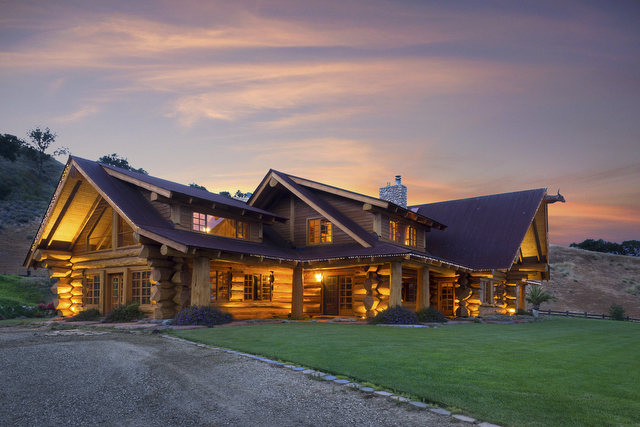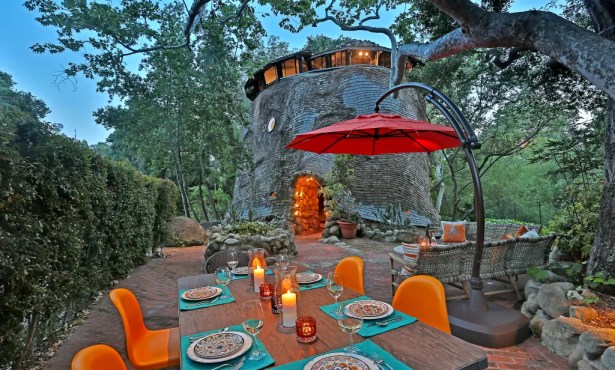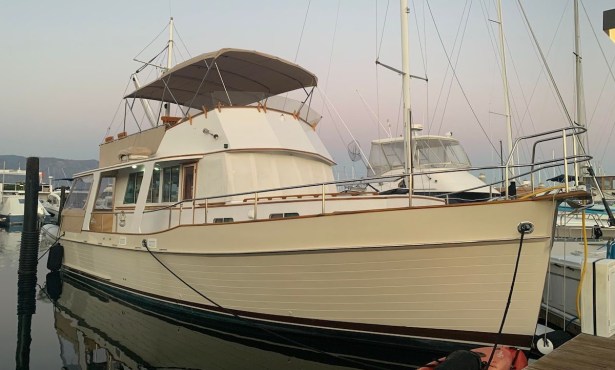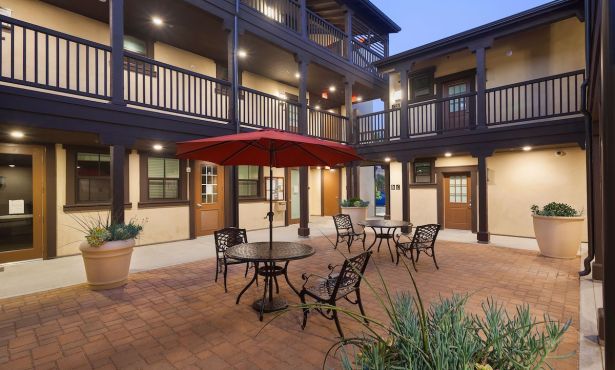Make Myself at Home: Log Cabin Mansion Estate on Highway 101
Take a Look Inside This Amazing Custom-Built Home Near the Gaviota Coast

Address: 2401 South Highway 101
Status: On the market
Price: $10,900,000
If you’ve driven the coast route from Santa Barbara to the Santa Ynez Valley in the past 10 years, then you’ve seen this house. Past Refugio and Gaviota beaches, through the famous tunnel featured in The Graduate, and just past the Highway 1 turnoff to Lompoc, sits a very distinctive log home on the southbound side of the freeway. If you get to Nojoqui Falls, you’ve gone a bit too far. But don’t worry, for it’s a friendly portion of the road with plenty to do and see as you make your U-turn. There’s a blueberry farm where you can pick your own berries and an organic farm stand that allows people to pay for their produce using the honor system.
Once I got myself onto the correct side of the freeway, I approached the log arch entryway with a sense of déjà vu. Although I hadn’t actually been inside the gate before, I’d driven past so many times that it felt familiar. A rusted classic Ford truck was perched in a meadow with a group of cattle posing picturesquely in the distance. The road forked in front of me, so I paused to take in this welcoming scene, and also to decide which way to proceed.
A large house sits off to the right, with a still impressive but relatively smaller house to the left. Up the sloping hill before me, in the center of the compound, is an even larger house. All of these buildings are constructed of huge logs. To call them log cabins is misleading. Even the smallest house is closer in size to a mansion than to any cabin I’ve ever seen.
I decide that the largest house, in the center of the property at the top of the hill, must be the main house, or at least the proper place to start.
The exterior of these houses is impressive from afar but even more remarkable up close. I learn that the logs are red cedar, and they are massive. The home’s owner is the founder of Pioneer Log Homes of British Columbia, a company that brought traditional Norwegian artistry and construction techniques into the modern era, building log homes around the world. This estate was built both as his own home and as a showplace for the company and their craft.
The unique style and craftsmanship is evident in every corner of every room. Walking into the foyer of the main house, I’m greeted by a dramatic open living room flanked by two curving stairways leading up to the second floor. The centerpiece of the living room is a double-sided fireplace constructed of natural river rocks. In fact, every surface is natural: from the wooden ceilings and the quartz floors to the central pillar, which is an entire rough-hewn tree trunk. The only feature vying for my attention is the actual outdoors. Huge windows showcase the soaring landscape and wide-open views of the property.
Moving into the kitchen, the counters and sinks echo the natural feel, combining quartz and copper to complement the wood surfaces. Unsurprisingly, the large kitchen leads into a large dining room, where many people could comfortably gather. There is a den with a full bath on this first floor, which could be used as a bedroom or granny’s quarters, and a huge high-ceilinged bonus room beyond. This room feels like a ballroom –— perfect for dancing or maybe a gym or meeting space.
The second floor has two en-suite bedrooms connected by a balcony sitting area that overlooks the living room below. On one side is the master suite with a kiva fireplace inlaid with rocks that I’m told are some of the oldest rocks in North America. The master bath has elaborate tilework and curved alcoves, an exceptionally deep shower, and a freestanding tub on a raised tiled platform with a stunning view of the hills behind the house. In addition to the other bedroom suite upstairs, there is a separate studio with its own outside exit stairway.
Behind the house, across a lush level backyard, is an amazing wine cave built into the side of the hill. It is a large, dramatic space with a cool, cave-like interior that feels as if you’ve stepped into a wine cellar in an 18th-century French countryside.
Walking around to the front of the house, I learn that the other buildings I sized up on my way in are a guesthouse on the right and a barn on the left. At almost 1,000 square feet, the guesthouse is a cozy miniature version of the main house. Another separate structure near the guesthouse is an outhouse. The owners were tired of cattle backing into the Porta-Potties during construction of the estate, so they went to the trouble and expense to build the only legally permitted outhouse in Santa Barbara County.
Across the meadow is the barn, which, upon closer inspection, I realize is hardly a barn. Its beautiful log construction is similar to the main house, with deep eaves and dormer windows. The interior is currently empty — a large shell that can be used for weddings or other events. The barn was built with the option to install a second floor, which means it could be turned into even more living space.
At this point, I started thanking my hosts for the tour, thinking I had seen everything. The more than 7,000-square-foot main house, with its attached studio, garage and gym, wine cave, barn, guesthouse, and even outhouse, was all more than I had expected. But when my tour guide asked if I wanted to jump in the jeep and go for a ride up the hill to see the cabin, how could I say no?
It took us a good 10 minutes to get up the hill, bumping uphill over a dirt road behind the main house. This was an adventure I hadn’t anticipated but thoroughly enjoyed. When I asked how far the property extended, the answer was virtually as far as I could see.
At the top of the mountain, on a flat clearing with an almost 360-degree view, sits the cabin. With no running water or electricity, but a fireplace and a split-rail fence encircling the front yard, the cozy cabin is more rustic than anything else on the estate. It’s much more reminiscent of the image that comes to mind when I think of a “log cabin.”
Not only is the cabin adorable, but it also has a view of Nojoqui Falls, the mountains, and, on a clear day, the ocean, which is only four miles away. The new owner of this 360-acre property will have options galore. It already sports a vineyard and cattle, and there’s plenty of room for more of either or both.
On the way back down the hill to the main house, the owner pointed out a rare double-trunked oak tree. Two trees had entwined together and become one as they grew. She said that people love the rare tree, and couples seek it out to use it as a backdrop for wedding photos. It seems fitting that on this estate built to showcase marvelous log homes that are both feats of architecture and works of art, this naturally wonderful tree clamors for attention, as well.
The log estate, at 2401 South Highway 101, is currently for sale in Gaviota, listed by Jim Callahan of The Epstein Partners at Keller Williams, and Loyd Applegate of Village Properties. Reach Jim at (805) 456-9147 or Jim@TheEpsteinPartners.com, or Loyd at (805) 570-4935 or Loyd@VillageSite.com, or visit logestate.com.



